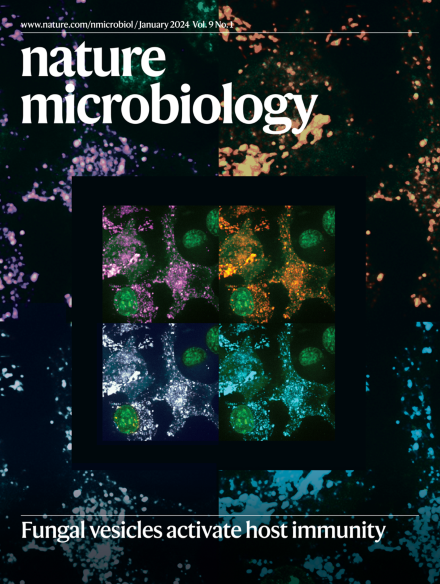在多个队列中,饮用咖啡与肠道洛森杆菌的丰度和流行率有关
IF 20.5
1区 生物学
Q1 MICROBIOLOGY
引用次数: 0
摘要
尽管饮食是人类肠道微生物群的重要决定因素,但人们对特定食物与微生物群落结构之间的相互作用仍然知之甚少。咖啡是一种习惯性饮用的饮料,具有公认的代谢和健康益处。我们以前曾发现,在 150 种食物中,咖啡是与微生物组成分相关性最高的食物。在这里,我们对美国和英国的人群进行了多队列、多组学分析,共收集了 22867 名参与者的详细饮食信息,然后与 211 个队列(N = 54198)的公共数据进行了整合。咖啡消费与微生物组之间的联系在不同人群中具有很高的可重复性(曲线下面积为 0.89),这主要是由于溶糖罗森氏菌(Lawsonibacter asaccharolyticus)这一物种的存在和丰度所驱动的。通过体外实验,我们发现咖啡可以刺激溶糖杆菌的生长。对 438 份样本进行的血浆代谢组学研究发现,咖啡消费者中富含多种代谢物,其中奎宁酸及其潜在衍生物与咖啡和阿苏糖杆菌有关。这项研究揭示了特定肠道微生物与特定食物之间的代谢联系,为从生化层面了解微生物的饮食反应提供了一个框架。本文章由计算机程序翻译,如有差异,请以英文原文为准。


Coffee consumption is associated with intestinal Lawsonibacter asaccharolyticus abundance and prevalence across multiple cohorts
Although diet is a substantial determinant of the human gut microbiome, the interplay between specific foods and microbial community structure remains poorly understood. Coffee is a habitually consumed beverage with established metabolic and health benefits. We previously found that coffee is, among >150 items, the food showing the highest correlation with microbiome components. Here we conducted a multi-cohort, multi-omic analysis of US and UK populations with detailed dietary information from a total of 22,867 participants, which we then integrated with public data from 211 cohorts (N = 54,198). The link between coffee consumption and microbiome was highly reproducible across different populations (area under the curve of 0.89), largely driven by the presence and abundance of the species Lawsonibacter asaccharolyticus. Using in vitro experiments, we show that coffee can stimulate growth of L. asaccharolyticus. Plasma metabolomics on 438 samples identified several metabolites enriched among coffee consumers, with quinic acid and its potential derivatives associated with coffee and L. asaccharolyticus. This study reveals a metabolic link between a specific gut microorganism and a specific food item, providing a framework for the understanding of microbial dietary responses at the biochemical level. Coffee consumption is associated with the presence and abundance of a specific member of the human gut microbiome, Lawsonibacter asaccharolyticus, and changes to the plasma metabolome.
求助全文
通过发布文献求助,成功后即可免费获取论文全文。
去求助
来源期刊

Nature Microbiology
Immunology and Microbiology-Microbiology
CiteScore
44.40
自引率
1.10%
发文量
226
期刊介绍:
Nature Microbiology aims to cover a comprehensive range of topics related to microorganisms. This includes:
Evolution: The journal is interested in exploring the evolutionary aspects of microorganisms. This may include research on their genetic diversity, adaptation, and speciation over time.
Physiology and cell biology: Nature Microbiology seeks to understand the functions and characteristics of microorganisms at the cellular and physiological levels. This may involve studying their metabolism, growth patterns, and cellular processes.
Interactions: The journal focuses on the interactions microorganisms have with each other, as well as their interactions with hosts or the environment. This encompasses investigations into microbial communities, symbiotic relationships, and microbial responses to different environments.
Societal significance: Nature Microbiology recognizes the societal impact of microorganisms and welcomes studies that explore their practical applications. This may include research on microbial diseases, biotechnology, or environmental remediation.
In summary, Nature Microbiology is interested in research related to the evolution, physiology and cell biology of microorganisms, their interactions, and their societal relevance.
 求助内容:
求助内容: 应助结果提醒方式:
应助结果提醒方式:


